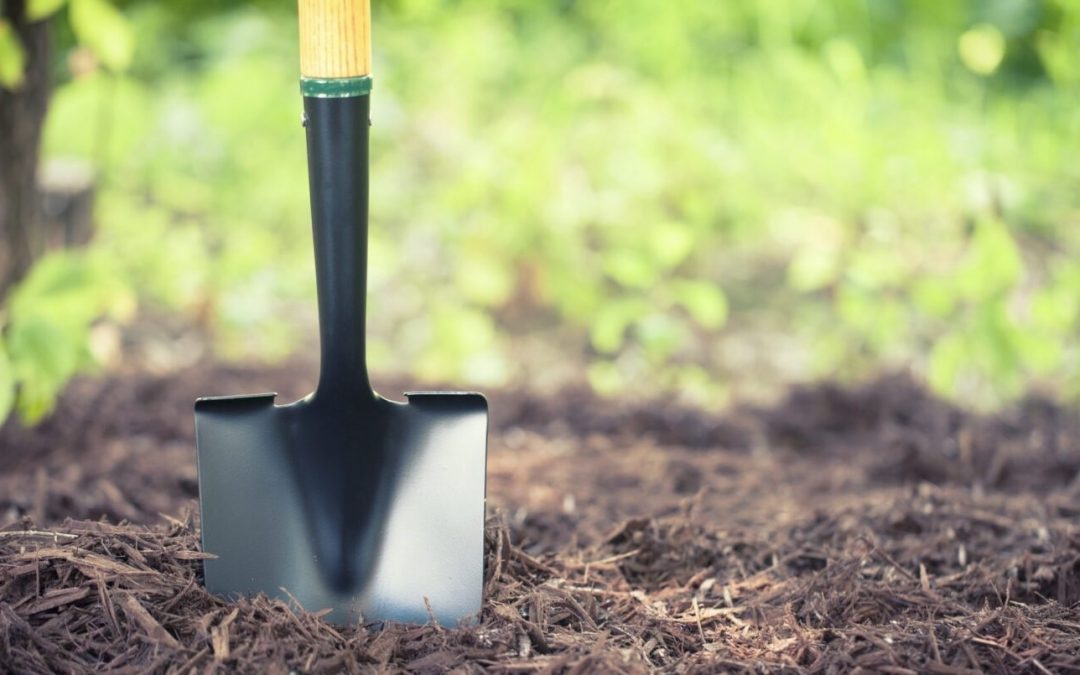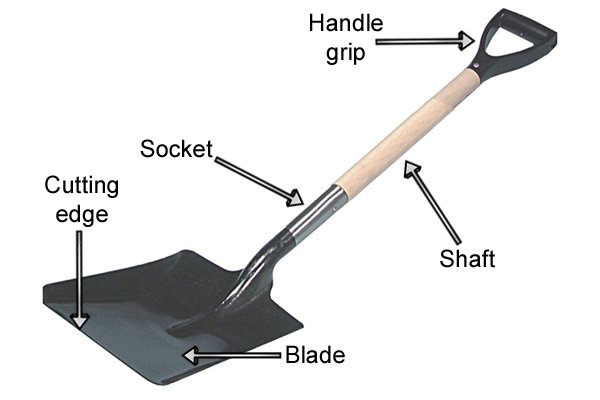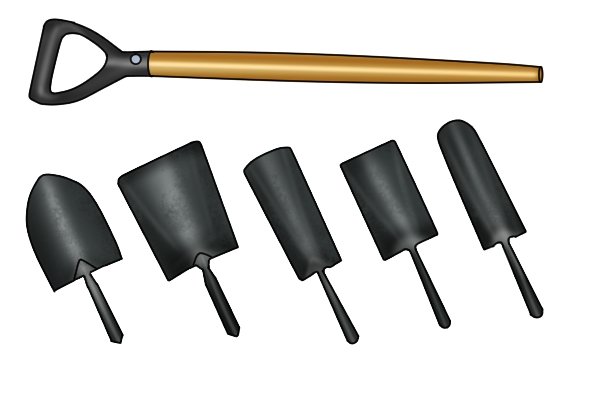Hello gardening lovers! We are known for our gardening work ethic. We even have our version of the backyards where we unwind after a tough week, grabbing a shovel or rake to tend to our garden beds. The love for gardening runs deep, and every person working the land needs a reliable trenching shovel.
There is a huge variety of shovels: there are both universal and specialized for specific operations. Therefore, before making a choice, you need to find out what types of shovels are there, and what makes a good trenching shovel different from the others.
Table of Contents
Shovels Types And Uses
For shovels, there is a guide that describes in detail all types of this tool and their uses. According to the document, there are three main groups.
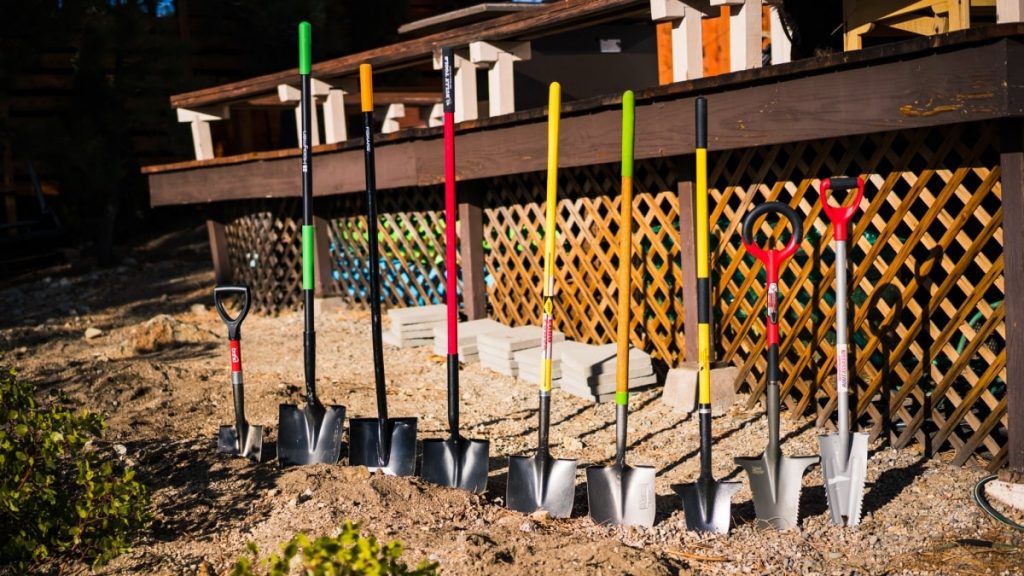
- Trenching shovel for digging.
- Shovel for Garden Construction Projects.
- Shovel for Loading and unloading.
Within these classes, there is a division into subcategories. Let’s look at them in more detail.
If you don’t know how to choose a specific shovel, because everyone seems to be “not quite right,” then you can purchase its components separately and assemble your ideal device.
The “Quality Formula” expert will tell you in detail about buying the ideal shovel:
Trenching Shovel for Digging
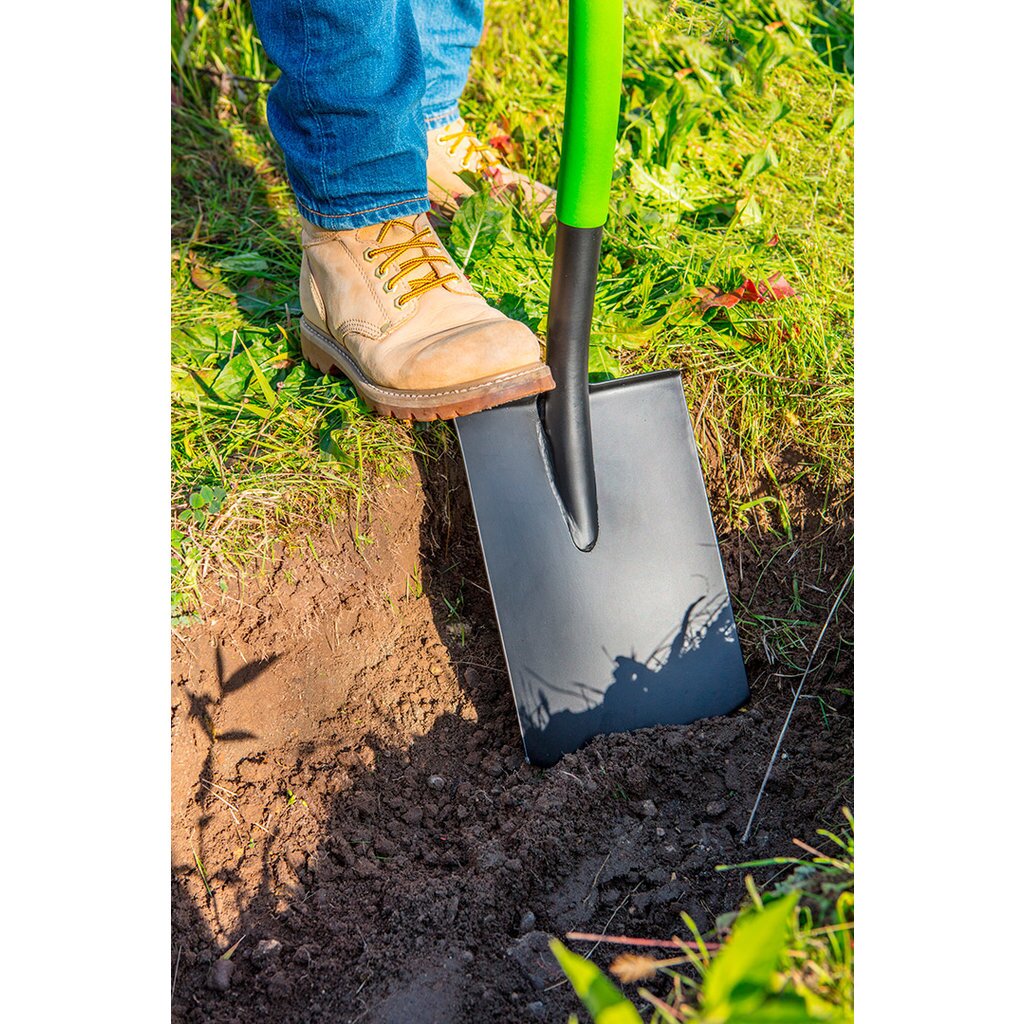
As is clear from the name, the trenching shovels are intended for work in the garden.
- Normal bayonet: blade width may vary. this trenching shovel is suitable for any gardening use, it has a rounded or rectangular bayonet shape. The first is good for heavy and clay soils, and the second is good for light soil and sand.
- Triangle shovel: stands out with a pointed edge resembling a triangle, and is ideal for excavation work over a large area.
- Excavating shovel: focused on digging holes, it allows you to grab a lump of earth and turn it to the surface. The tip here is slightly rounded.
Shovel for Garden Construction Projects

They are used in garden constructions and are in many ways similar to the previous group.
- Digging – can be pointed or rectangular, and is needed for digging ditches, and similar activities. A trenching shovel with a slightly recessed bucket and a rounded blade is known as the “American shovel”. Another typical difference between the American model is the curved handle and crown, which create leverage when digging and thus reduce the load on the lumbar spine. It is also successfully used in gardening.
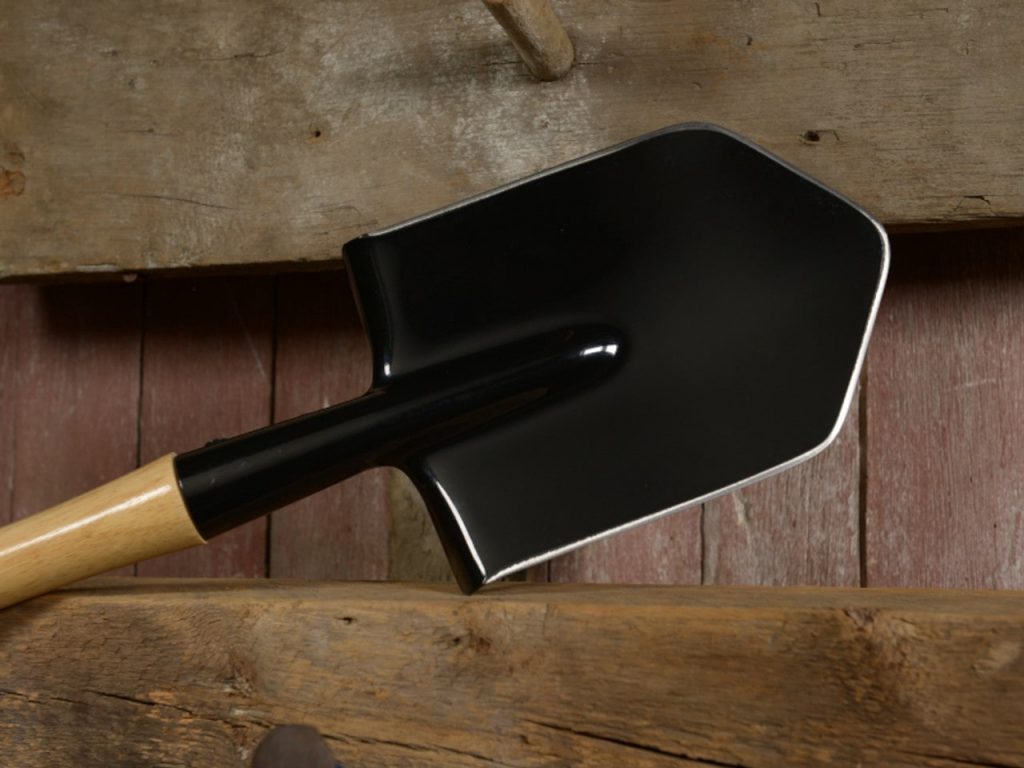
- Pick-up (shovel, scoop) – most convenient for carrying bulk materials. They can be smooth or faceted, depending on what is being moved with their help: sand, crushed stone, grain, etc.
- Mixing – such tools help mix and supply solutions: cement and concrete. Characterized by a straight design and protective edges.
Shovel For Loading and Unloading
They are actively used by professionals since they represent selected options improved for specific needs.
- Shovel for sand – similar to a scoop with an inclination of approximately 35 degrees and high sides.
- Shovel for Grain – almost similar to sand, but made from lighter materials.
- Coal shovel – not much different from the previous one, except that the scoop will be made wider so that more coal can fit.
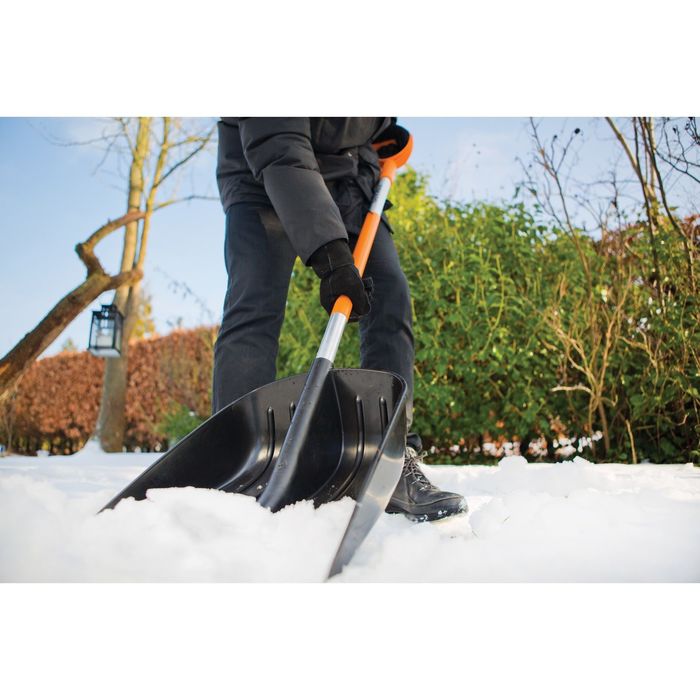
- Snow plow – the bucket is made wide to rake up as much snow as possible in one movement. For freshly fallen dry precipitation, it is better to use a plastic shovel, and for frozen and saturated moisture, a metal shovel is more suitable.
Other Types and Uses
Since the 80s, a large number of completely new shovels have appeared, and sometimes unusual shovels have been added to the trenching shovel types listed above.
- Drainage (trench) – narrow and elongated, it is ideal for digging and cleaning trenches.
- The miracle shovel (ripper) is an intricate unit that allows you to dig and loosen the soil in one movement. However, such a device also has its drawbacks, so before purchasing, you should familiarize yourself with all the features of the miracle shovel for digging the ground.
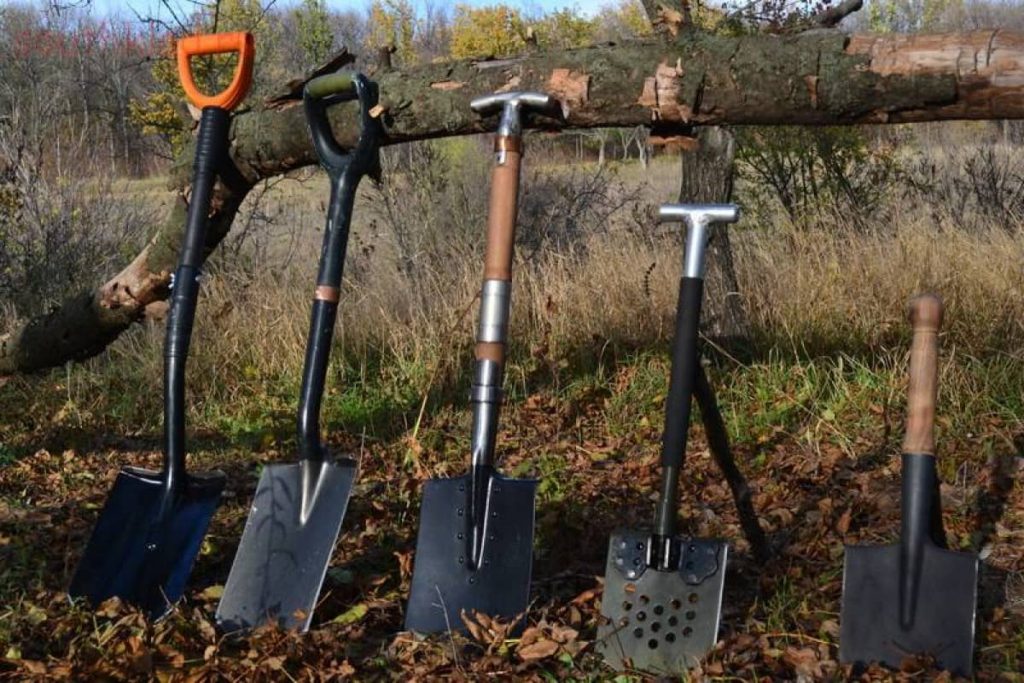
- With a jagged edge – the tip resembles a saw. Helps when processing heavily overgrown areas.
- Flat wooden – used in baking to put loaves in and out of the oven.
Is it advisable to spend money on many shovels? Yes, if you do the same jobs regularly. But for a wide range of tasks, it is advisable to purchase several really good products without narrow specialization.
Trenching Shovel Design & Requirements
A trenching shovel has three components: a bayonet, a handle grip, and a shaft. Despite its apparent simplicity, attention should be paid to each element.
The trenching shovel should not be very massive, but if it is too light, it should alert you: it means it is made of fragile material. The ideal weight is about 1.8 kg.
Bayonet
What is the main thing in a trenching shovel? Of course, a bayonet. It determines how easy it will be to work with this or that tool, and whether it will become unusable after the first season.
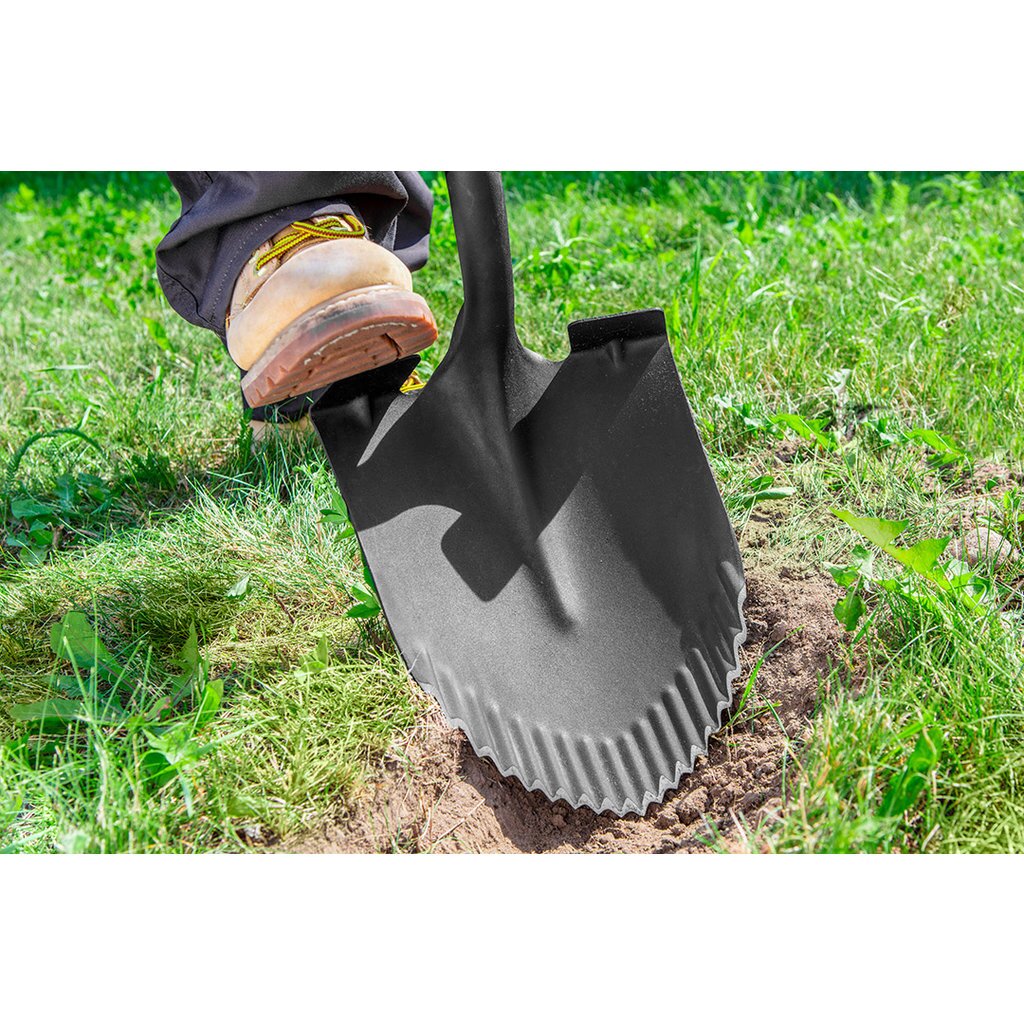
We talked about shapes in the last section, and now we will discuss what materials are used to make this part.
Steel
Here it is important to consider what kind of steel is used in the trenching shovel because depending on the brand, the metal manifests itself completely differently.
- Low-carbon – it is inexpensive, but it also does not perform well: it bends and cracks easily. Such a tool will not last long. In addition, dirt sticks to it, and it is quite heavy.
- Rail – made from used railway rails, which are hardened for strength. Such products are durable, resistant to mechanical stress, and do not break for years. However, equipment made from such steel turns out to be more massive and expensive.
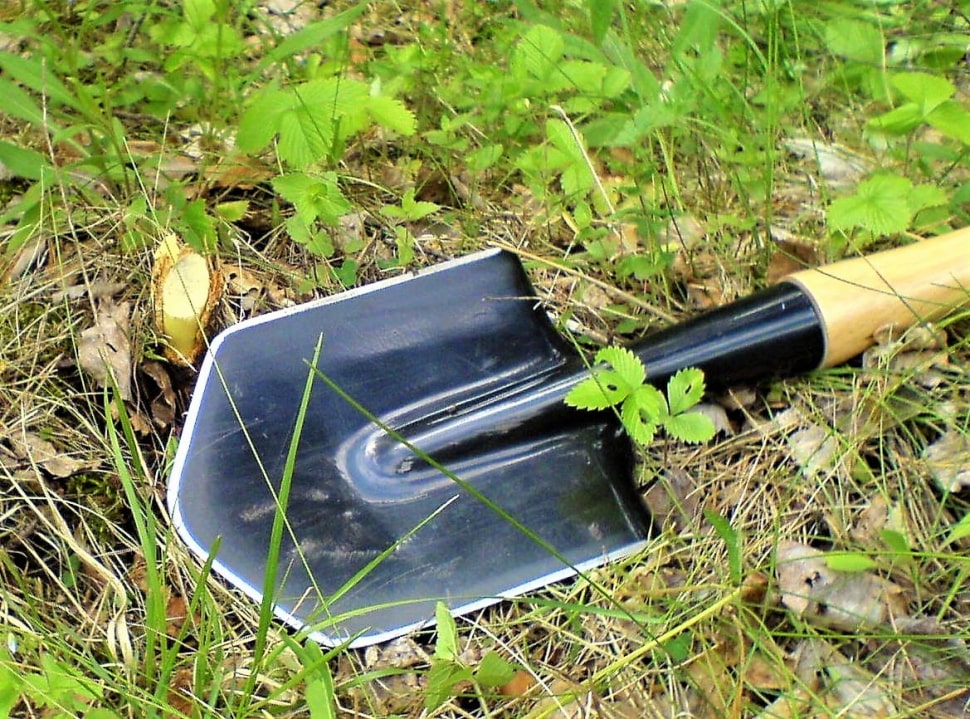
- Stainless steel trenching shovel – suitable for working with aggressive environments: solutions, saline soil. It is a reliable tool, does not rust, and sharpens well. The price of this type is high.
- Tap the trenching shovel blade – the sound should be loud.
Titanium
A lightweight and durable trenching shovel that does not stick to soil. The disadvantages include hardness: under heavy loads, the bayonet does not bend, but immediately breaks. The low popularity of such shovels is explained by their high price.
Metal trenching shovels are sometimes coated with paint, Teflon, or a special powder coating. They protect against corrosion and prevent dirt from sticking.
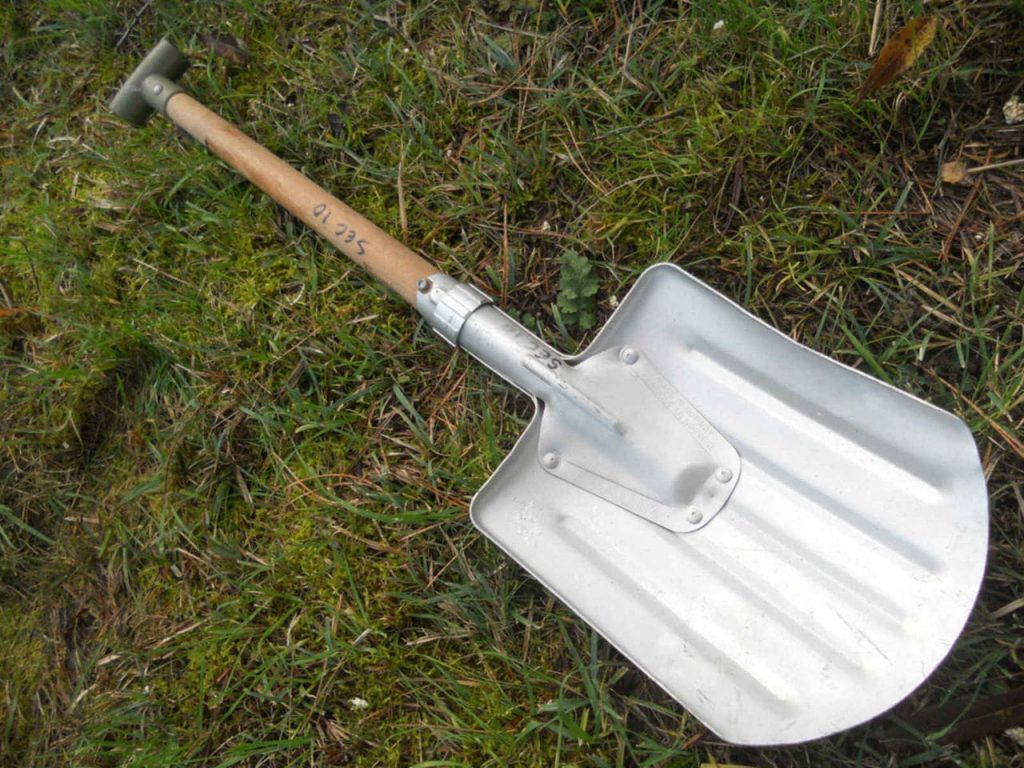
Specific types of shovels – for example, for snow removal – are made of wood or plastic. These materials are also used in the production of handling equipment intended for light raw materials.
Shovel Shaft
The trenching shovel shaft is important. but the most important is the material that is made of. There are three possible options:
Wood
The most common option, since the wooden trenching shovel shaft combines two positive features: reasonable cost and quality.
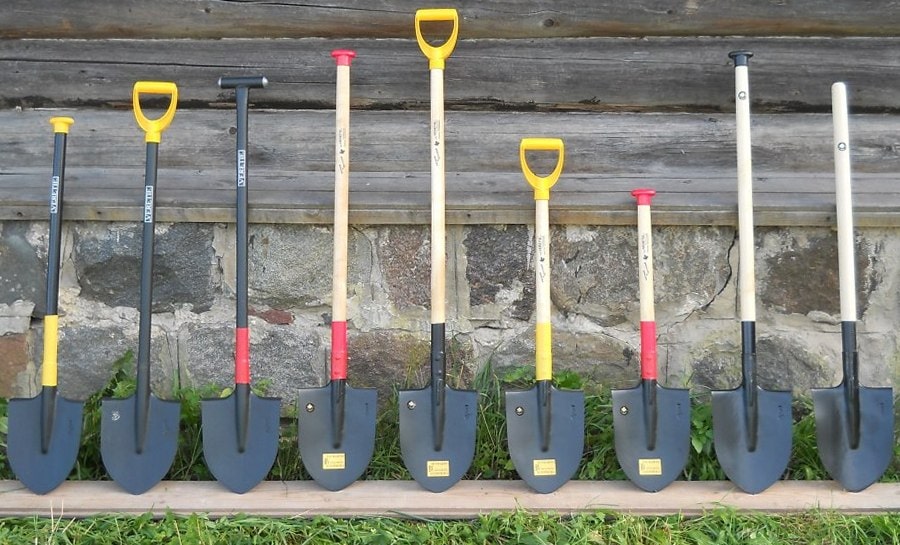
In addition, wood does not freeze your hands when working in cold weather. The wooden part can be cut to the desired length, and in case of breakage, it can be easily replaced with a new one.
The downside is its considerable weight. It is worth noting that wood is subject to natural deterioration: it cracks, dries out, and becomes moldy. Although most of these problems arise from improper storage of the trenching shovel.
Cheap shafts are made from pine, but they have low-performance properties; such a handle has to be replaced with a new one pretty soon.
More expensive products are equipped with handles made of birch and acacia. Shafts from larch, oak, and ash are considered the leaders in strength.
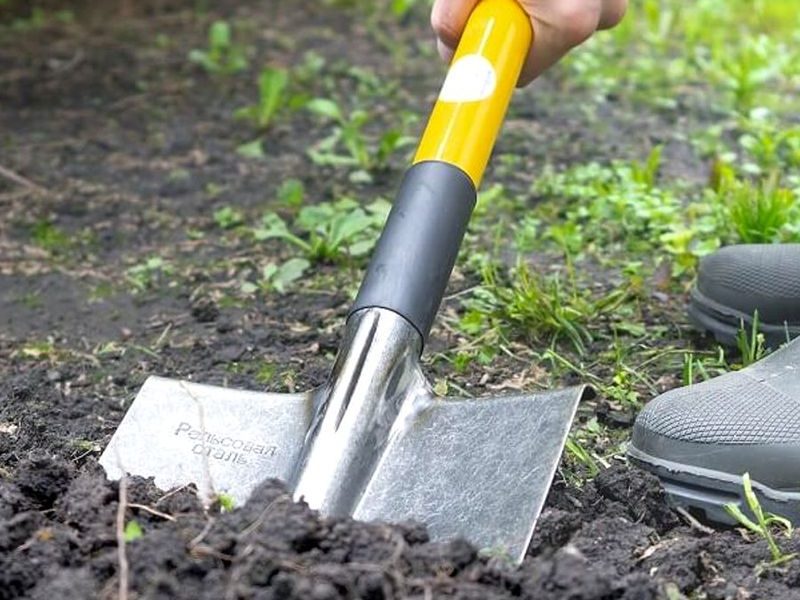
Whatever type of wood the trenching shovel shaft is made of, it is important that the wood is well-sanded and there are no chips, cracks, or traces of knots on its surface. Otherwise, there is a risk that the cutting will simply break under heavy load.
In some cases, the wood is coated with varnish or paint. This allows you to protect it from rotting, but complicates the selection process: there is a risk that low-quality material is hidden under the coating layer.
Metal
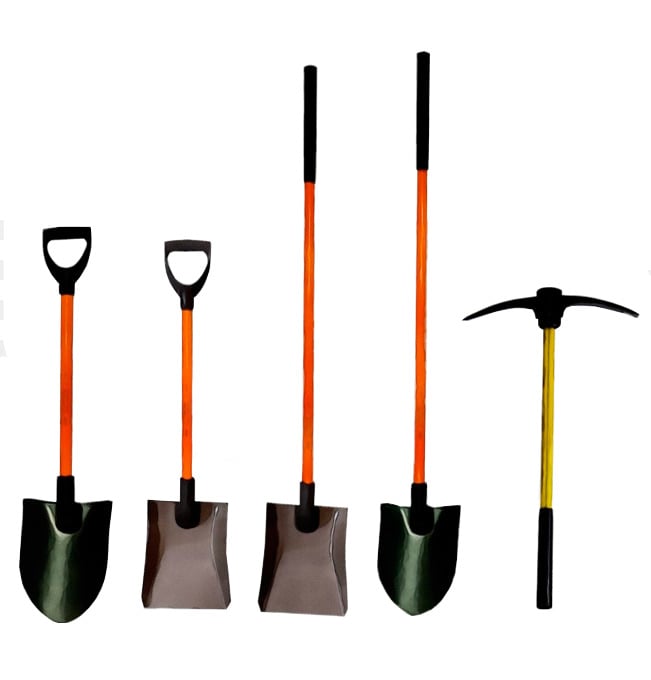
The trenching shovel shaft is made of aluminum or steel. This is a hollow tube that can be of a special shape, and not just straight, like a wooden handle.
These guns are quite reliable. At the same time, aluminum ones are also lightweight. But such devices “cool” your hands in the cold, are more expensive than wooden ones, and have a limited model range (only three sizes in length).
In addition, the shafts cannot be replaced and if they break, you will have to buy a new shovel. And the price for them, as they say, “bites”.
Carbon Fiber
Composite material with excellent performance characteristics: durable, unbreakable, lightweight. But unfortunately, the cost of such a shaft is unlikely to please you.
Plastic
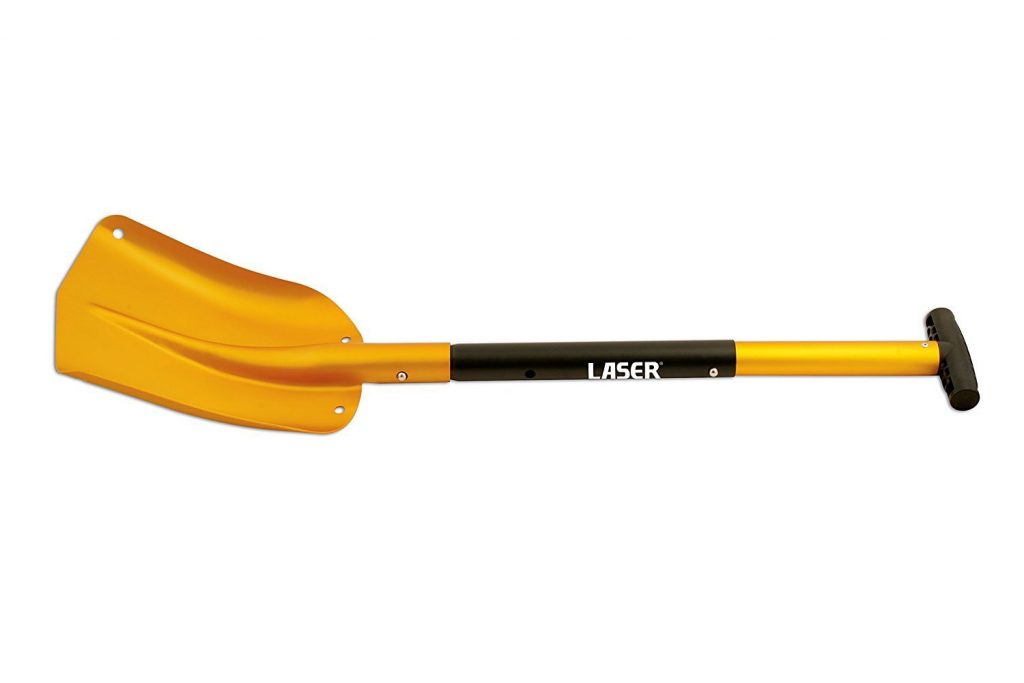
It stands out for two advantages: low weight and low cost. This is where the advantages end because the technical characteristics of such shafts are far from brilliant: they cannot withstand any serious load, they can crack from an impact – in general, they are fragile and short-lived.
It is necessary to carefully consider the selection of shaft parameters. The standard length is 120 cm, but it is advisable to select equipment according to your height: the trenching shovel should be 10 cm below your shoulder.
The ideal shaft diameter is considered to be 40 mm. Larger or smaller sizes can lead to rapid fatigue.
In addition to simple straight shafts, there are other types. Shortened versions are used for minor operations.
They are also suitable for teenagers and those who, for health reasons, are unable to handle large objects. They have less functionality but are much lighter and more compact.
Curved ones are used mainly for American trenching shovels. In telescopic models, the handle folds and extends, like a vacuum cleaner pipe.
This solution makes it possible to easily adjust the length of the instrument to your height. In addition, they are convenient to store and transport.
Handle Grip
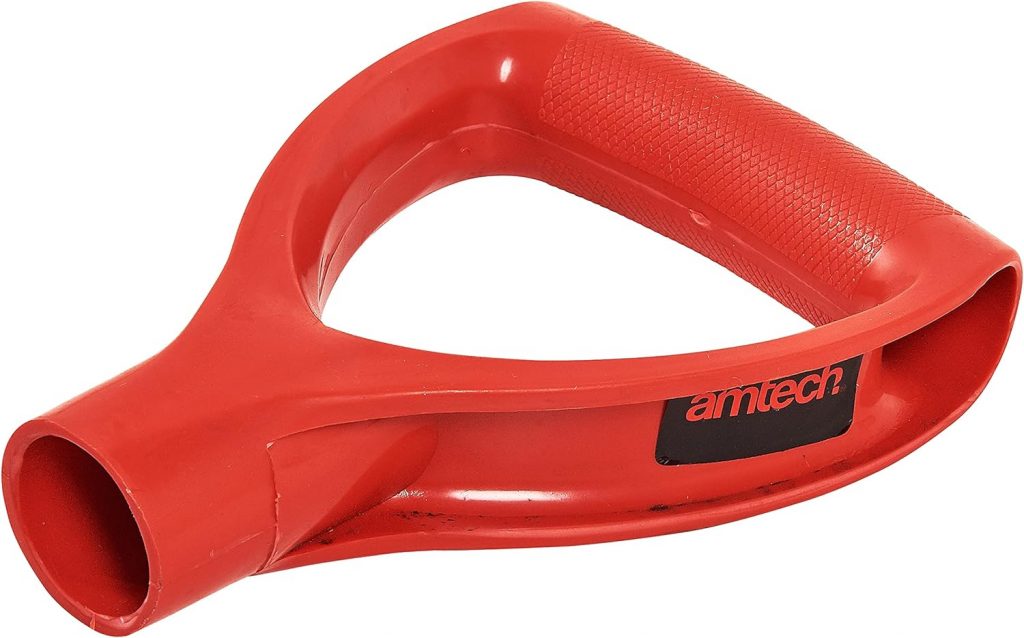
This is an optional part of a shovel, but in some cases, its presence is convenient. Trenching shovels with handle grips are best used for digging, loading, and pouring, but during fieldwork, for example, harvesting potatoes, holding onto the handle is not entirely convenient, since the shovel must often be intercepted.
There are other different types of handle grips like fork, ball, and T-shaped.
Typically this component is made of plastic. Its surface can be smooth, corrugated, or with rubberized inserts.
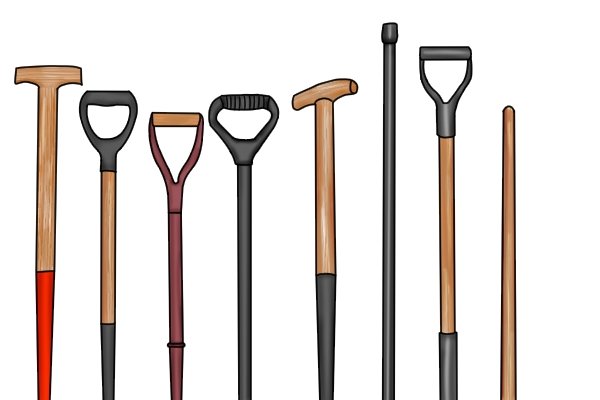
The last two types are more practical because they do not slip out of the hand and make it possible to work faster and with less effort.
Choosing The Best Trenching Shovel: A Checklist
If your plot of land is small and you simply have nowhere to store a large number of garden tools, then you should pay attention to a bayonet shovel, which can be called a universal option for all occasions.
With the help of a bayonet shovel, you can do almost any work in the garden, such as harvesting crops, digging holes for planting trees, digging up plants for the winter, and much more. In addition, due to its popularity, it can be bought at any gardening equipment store.
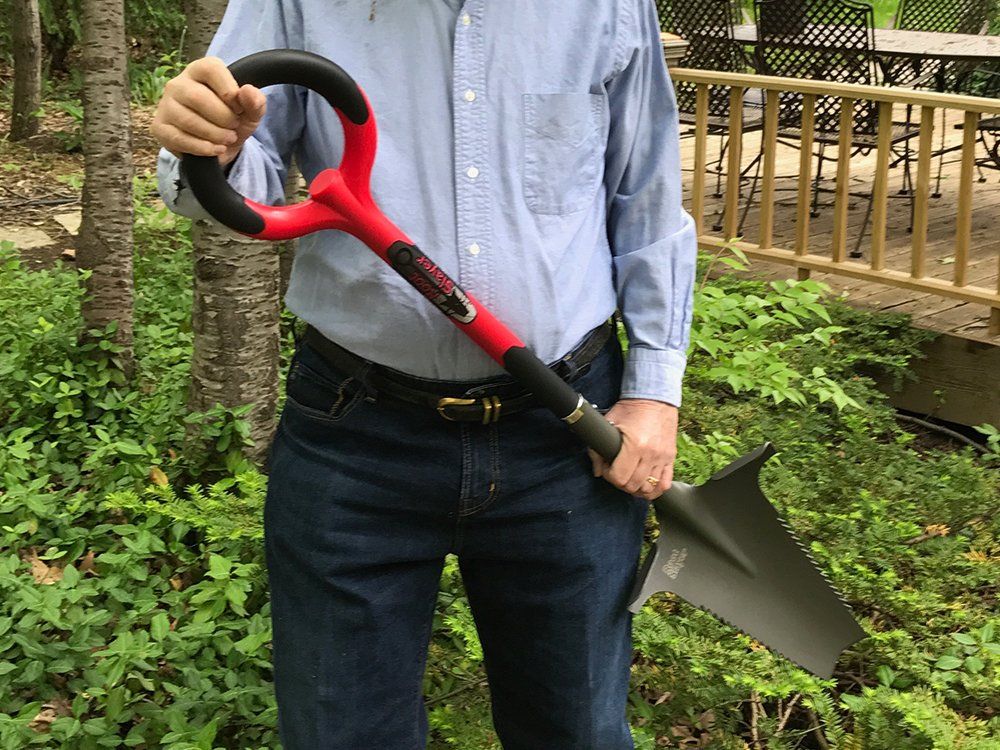
The Blade Shape
An important role in choosing a trenching shovel is played by the shape of its blade. Depending on the quality of the soil on the land, you can choose either a shovel with a rectangular blade, which is ideal for loose soil or sand or a shovel with a classic rounded blade, which will be appropriate for hard soil or clay.
In some cases, if you neglected your plot over the summer and want to dig it up in the fall, thereby getting rid of weeds, then a special shovel – one of the sides or even the blade itself resembles a saw – would be a good option.
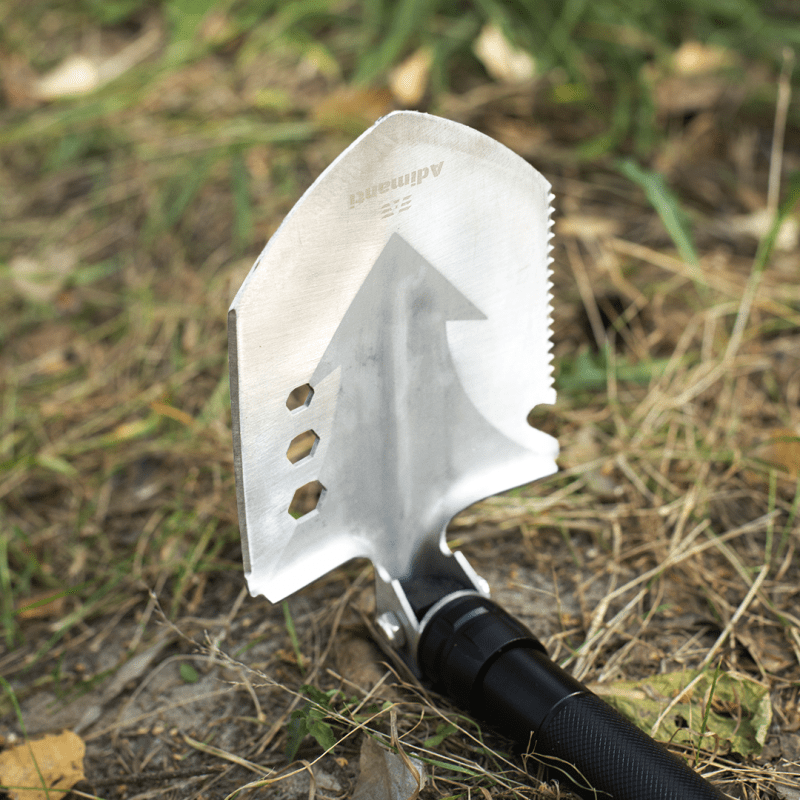
These types of trenching shovels are designed specifically for working with virgin soil and soil riddled with roots.
Steel or Titanium
The first and most important rule when choosing a material for a trenching shovel bayonet is that the metal must be resistant to rust.
The most popular are bayonets made of stainless steel or, more recently on the market, titanium.
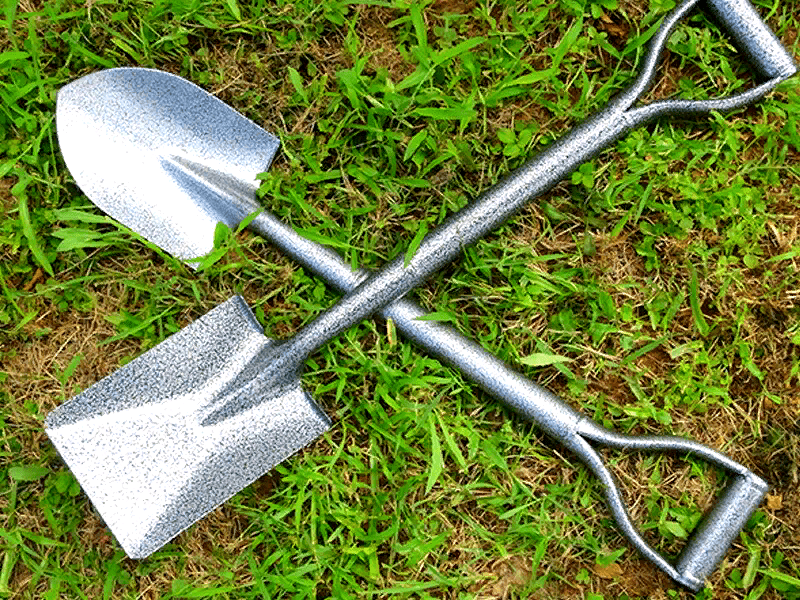
Trenching shovels made of titanium or an alloy of aluminum and titanium have appeared on the market relatively recently, but have already gained wide popularity – they are strong, durable, and, unlike their steel counterpart, lightweight, which is very important during long-term work.
If you are not a fan of “space” technologies and have opted for a classic steel shovel, here is a little advice on checking the quality of stainless steel: tap the blade of the shovel. High-quality steel should ring loudly when struck.
Save Your Back
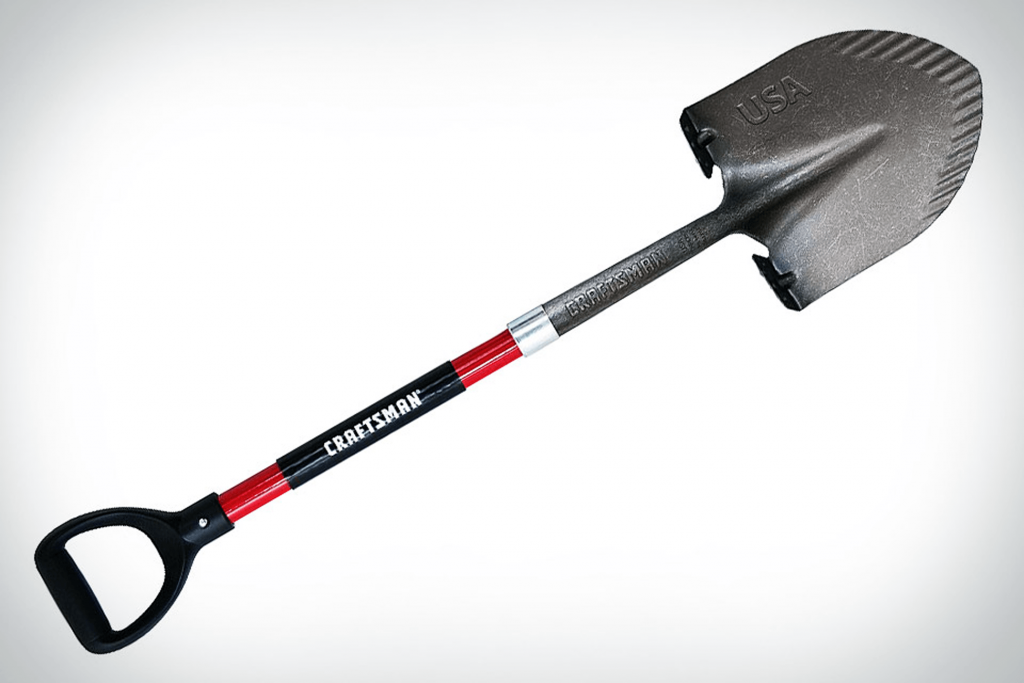
The so-called “ American shovels ” – hybrids of the bayonet and scoop shovels, somewhat reminiscent of a spoon in shape – have gained great popularity. The American blade is slightly concave, like a scoop blade, and the handle extends at a slight angle, and not parallel to the blade, like a bayonet blade.
This design of the shovel allows you to bend down less while working in the garden or garden. Working with such a shovel is not only convenient and efficient but also helps protect your back from unnecessary stress.
Shovel Height
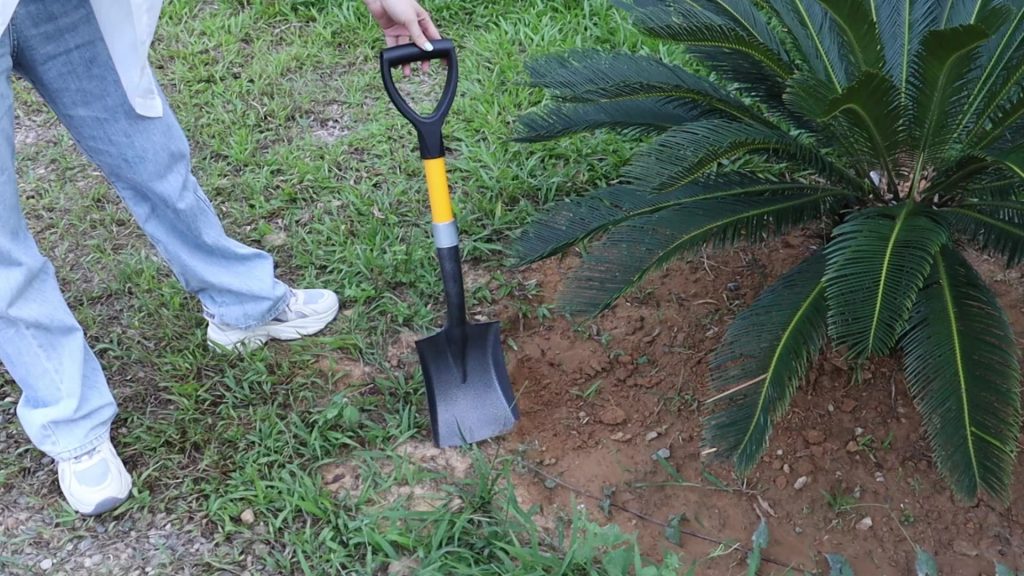
When choosing a shovel, remember that the height of the shovel should correspond to your height.
As we mentioned above, The optimal height of the shovel is approximately 10 cm below your shoulder, and in some cases – at the level of the bend of the elbow joint.
Trenching Shovel Brands & Manufacturers
The manufacturer that made the trenching shovel plays a big role. Unknown Chinese companies care little about the quality of the product, so apart from the low price, they have no advantages.
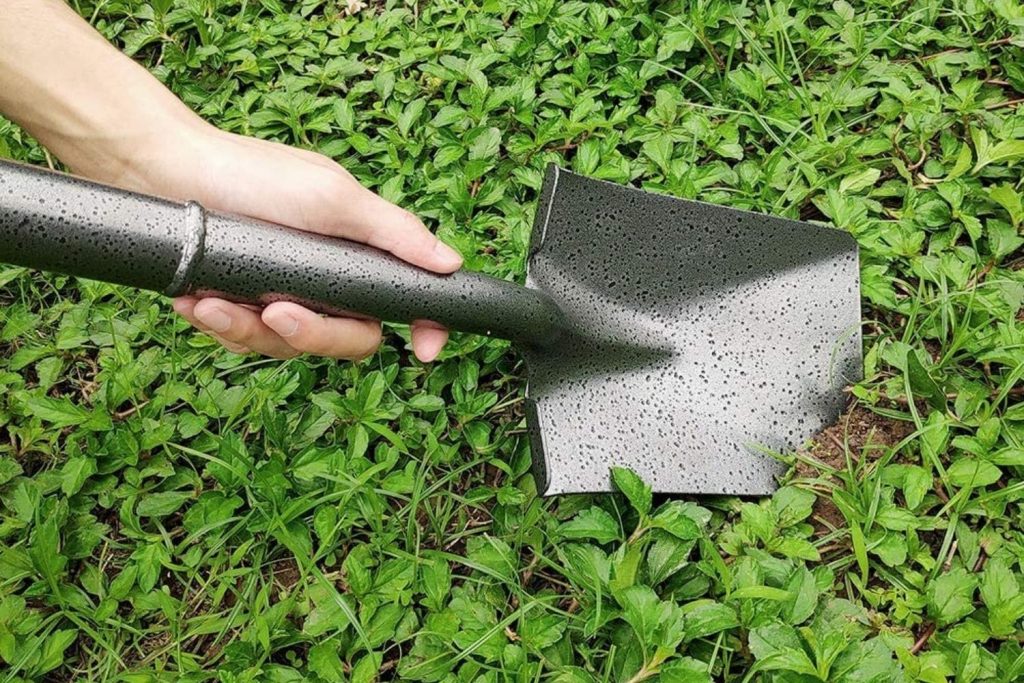
However, you cannot trust only the name of the manufacturer without deciding on the purpose and main characteristics of the instrument. This will most likely lead to predictable disappointment.
The undisputed leader in the production of garden tools is the Finnish company Fiskars.
Their products are distinguished by thoughtfulness, durability, and good execution, and their signature black and orange design makes them easily recognizable.
Other companies also produce good products: Garant (Canada), Truper (Mexico), and GARDENA (Germany).
Conclusion
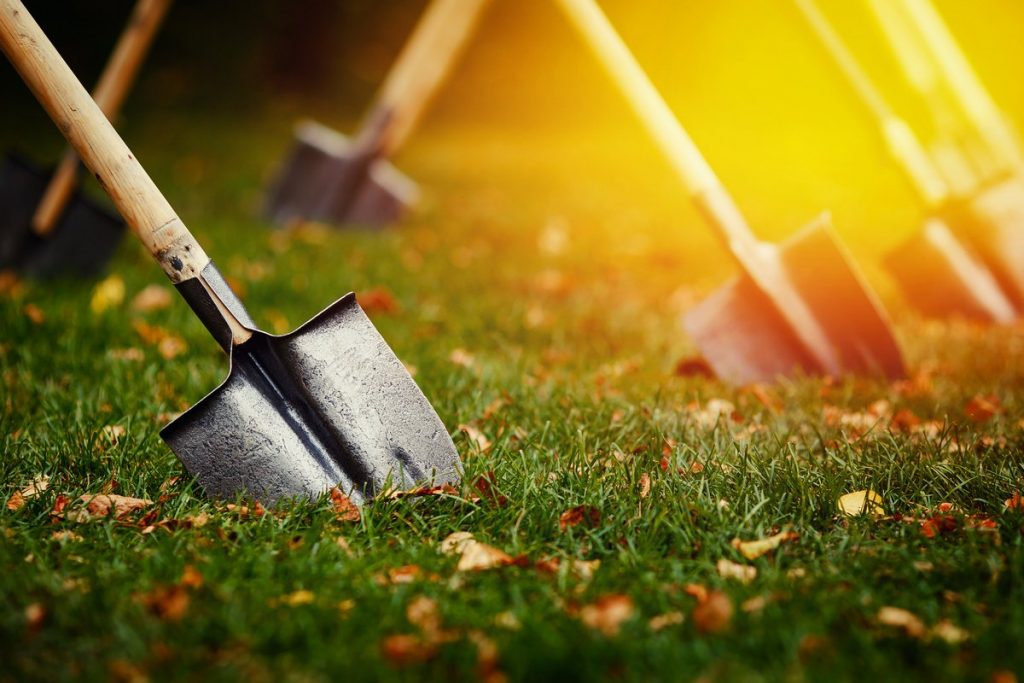
I hope it is now clear how and why you must choose a trenching shovel based on your needs. If you need a universal “workhorse” for the garden, then there is nothing better than the bayonet variety.
For construction, it is worth choosing a reliable and conveniently shaped picking tool. Wide plastic and aluminum equipment will make snow removal easier.
Much depends on what exactly you have to work with: different types of soil and building materials require different designs and materials.
Explore a comprehensive guide to discover the best gardening tools of 2024 for an extensive selection of essential gardening equipment.

